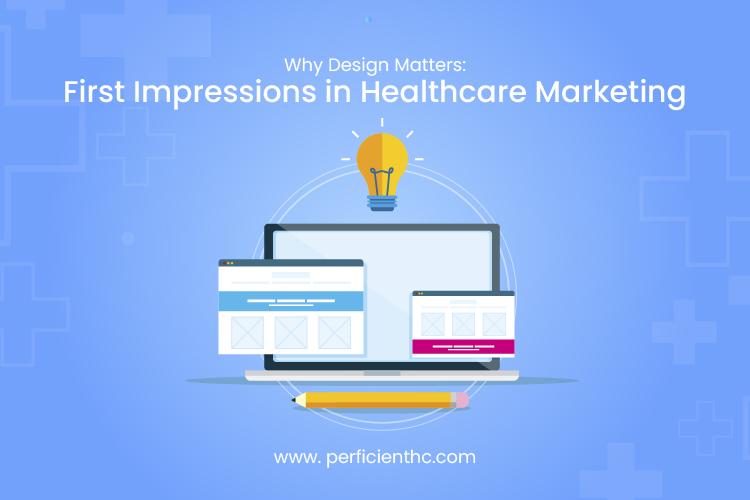In healthcare marketing, first impressions are everything. Before a patient reads your content, books an appointment, or visits your facility, they engage with your brand visually. Whether it is your website, a digital ad, or a mobile app, design is the first conversation you have with your audience.
In an industry built on trust and credibility, good design does more than look appealing. It communicates professionalism, creates confidence, and guides users toward action. In short, design can make or break your healthcare marketing strategy.
Here is why design matters more than ever and how healthcare organizations can make that first impression count.
Trust Begins with Visual Credibility
In healthcare, trust is essential. Patients want to feel confident they are choosing a provider or organization that is capable, reliable, and up to date. A poorly designed website or outdated visual identity can immediately create doubt.
A clean, modern, and cohesive design shows that your organization pays attention to detail and values the user experience. This trust leads to higher engagement, stronger loyalty, and better conversion rates.
Patient Experience Starts Before the Appointment
Today’s healthcare journey often begins online. Patients might search for a condition, browse provider profiles, or visit a landing page before ever walking into a clinic. These early digital interactions shape how they view your organization.
Design plays a major role in whether a visitor stays to explore or clicks away. A thoughtful layout, clear navigation, easy-to-read fonts, and purposeful visuals all contribute to a welcoming and supportive digital experience.
Design Encourages Action
Effective design is not only informative but also persuasive. Well-placed calls to action, clean appointment buttons, and clearly highlighted services help patients navigate their journey with ease.
Design can guide the user’s attention where it matters most, encouraging them to book an appointment, sign up for a newsletter, or learn more about a service. This is especially important in competitive healthcare markets where digital attention is limited and decisions are made quickly.
Mobile Friendly Design is Non-Negotiable
Most people access healthcare content on their smartphones. If your site is not mobile optimized, you are already losing potential patients.
Mobile friendly design ensures fast loading, responsive layouts, and smooth navigation on any screen size. This kind of accessibility increases satisfaction and reduces drop-off, making it easier for patients to stay connected with your brand.
Consistency Builds Recognition and Confidence
A strong healthcare brand is about more than just colors and logos. It is about delivering a consistent visual experience across every channel.
When design elements are aligned across your website, patient portal, social media, and marketing materials, your brand becomes more recognizable and trustworthy. It also creates clarity in a space that is often filled with confusion and complexity.
Conclusion
In healthcare marketing, design is communication. It is the first impression and often the lasting one.Good design builds trust. Great design builds relationships.
By focusing on clarity, consistency, and patient centered experiences, healthcare organizations can create digital touchpoints that engage, inform, and convert. In an age where every second counts, design could be the difference between gaining a patient or losing one.
Invest in meaningful design and your patients will notice.
Frequently Asked Questions
Design creates the first impression of your brand. A clean, modern, and user-friendly design helps build trust, engage patients, and guide them toward taking action.
Patients often judge credibility based on visual appearance. If your website or app looks outdated or hard to navigate, patients may choose another provider who appears more professional and organized.
Mobile friendly design is essential, as many patients access healthcare information through their phones. A responsive and easy-to-use mobile experience increases satisfaction and reduces bounce rates.
Yes. While design itself does not treat patients, it impacts how easily they access information, book appointments, and follow care instructions, all of which contribute to better overall outcomes.
Look at your website analytics, bounce rates, and conversion data. If users are dropping off quickly or not completing actions, it may be time to assess the clarity, accessibility, and visual quality of your digital assets.

